Агилульф, король Ломбардии (лангобардов).
Автор: Homo Vulgaris
THE LOMBARDS were a Germanic people of Scandinavian origin who ruled most of Italy. Shortly after the collapse of the Western Roman Empire in 476, the Ostrogoths, a branch of the Goths, formed their own kingdom in Italy. The Ostrogothic kingdom was destroyed in the 6th century by the Eastern Roman general Belisarius, and Italy became part of the Eastern Roman Empire of emperor Justinian the Great (died in 565). Until then, the Lombards had been living in Pannonia, and in alliance with the Avars, a nomadic people from the Asian steppes, they defeated the Germanic Gepids. Shortly after Justinian’s death, the year 568, king Alboin, fleeing from their former Avar allies, led the Lombards across the Alps into Italy, where they were joined by the remaining Ostrogoths and found resistance by the Eastern Romans. The Lombards successfully conquered northern Italy, and shortly after they expanded to central and southern Italy. Only the territories of Ravenna, Rome, and the southernmost part of Italy, remained under Byzantine rule.
The Lombards, whose name literally means “long beards”, were unlike other Germanic peoples such as the Goths, the Franks or the Vandals. While these earlier migrators rapidly became Romanised and Christianised, the Lombards preserved their pagan Scandinavian deities and traditions for much longer, mixed with Arian Christianity, until they gradually converted to Catholicism. A hammer-wielding god in a stone relief from Novara has been interpreted as Thor, and runic inscriptions from the 7th-8th centuries have been found in Apulia. They were also influenced by the nomadic Avars. The Lombard kingdom of northern Italy fell to the Frankish king Charlemagne in 774 and subsequently became part of the rising Carolingian Empire. The Lombards retained control of southern Italy until the Norman conquest in the 11th century.
The Lombards of northern Italy have been credited for the early development of an art style that they exported first to the Catalan Pyrenees, and then the rest of western Europe, replacing earlier styles. This artistic movement, which combined Late Roman and Germanic art with Christian iconography, is known as Romanesque.
Replicas used:
- Ring sword: Patrick Bárta.
- Axe: Cristiano Da Mont’Olmo.
- Lamellar helmet: made by Stanislav Ermakov, photo from one of Satine Zillah’s reference packs: https://www.artstation.com/satinezillah/store
- Lamellar armour: Invicti Lupi reenacment group.
https://ru.wikipedia.org/wiki/Агилульф
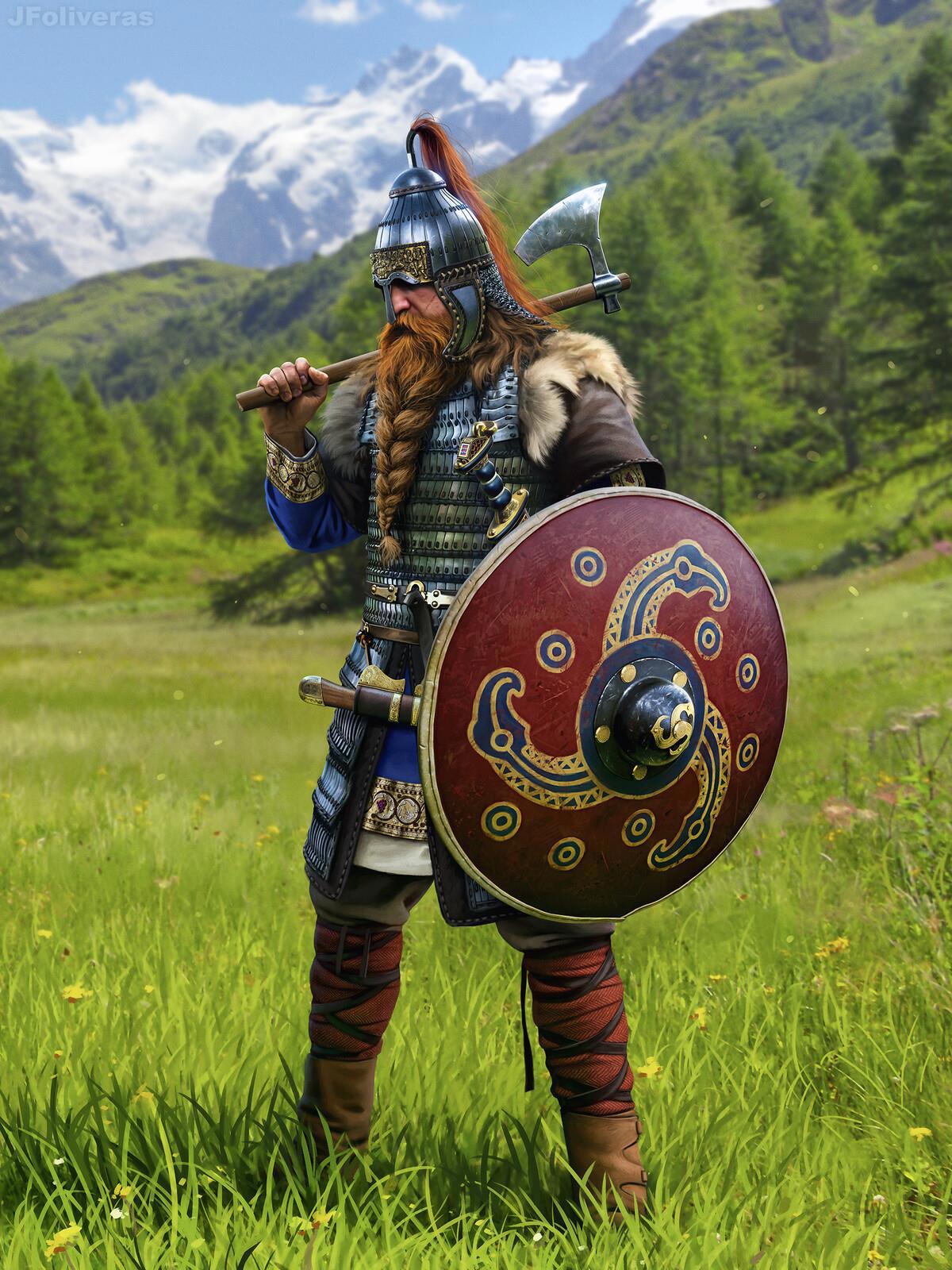
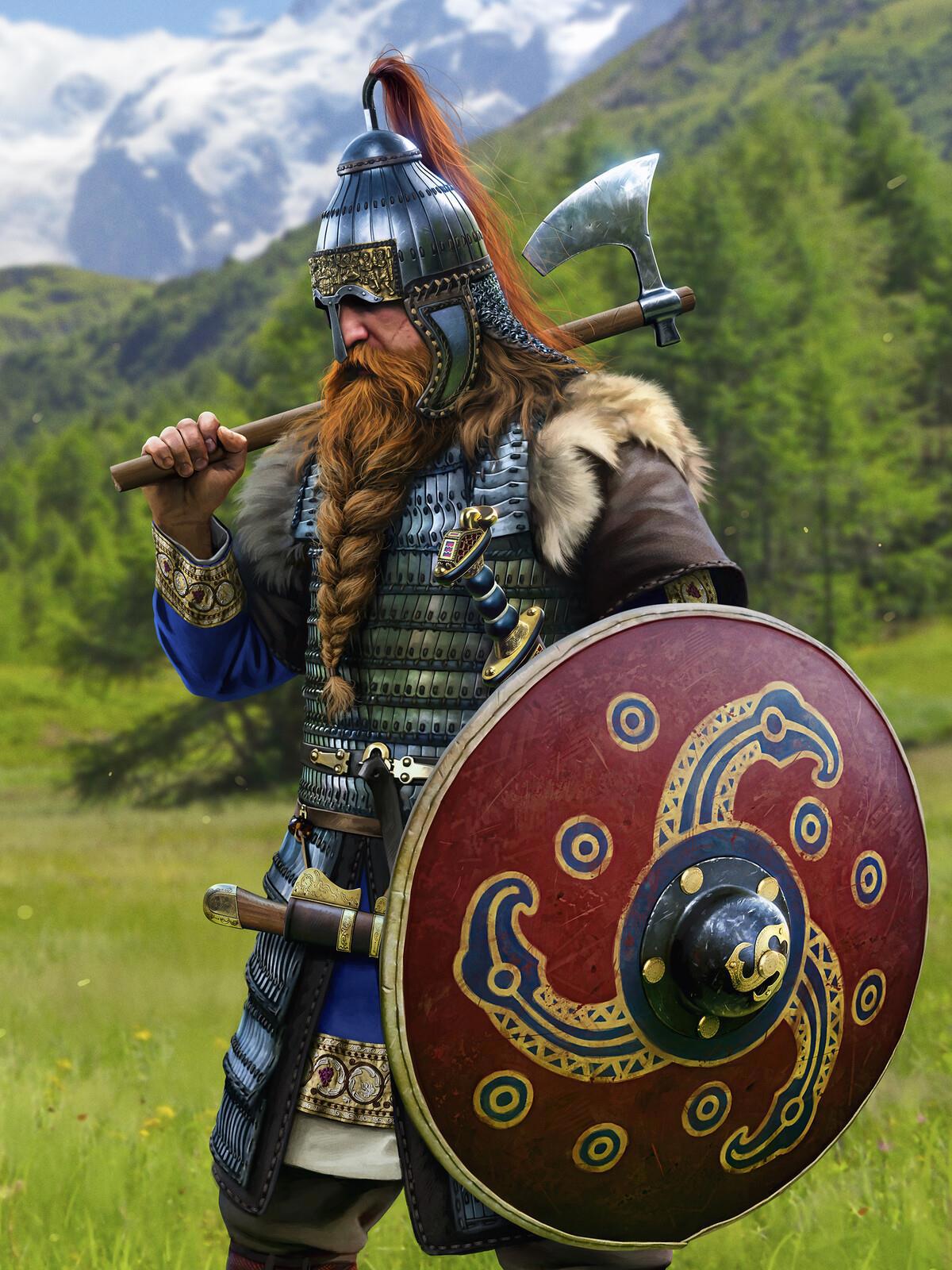
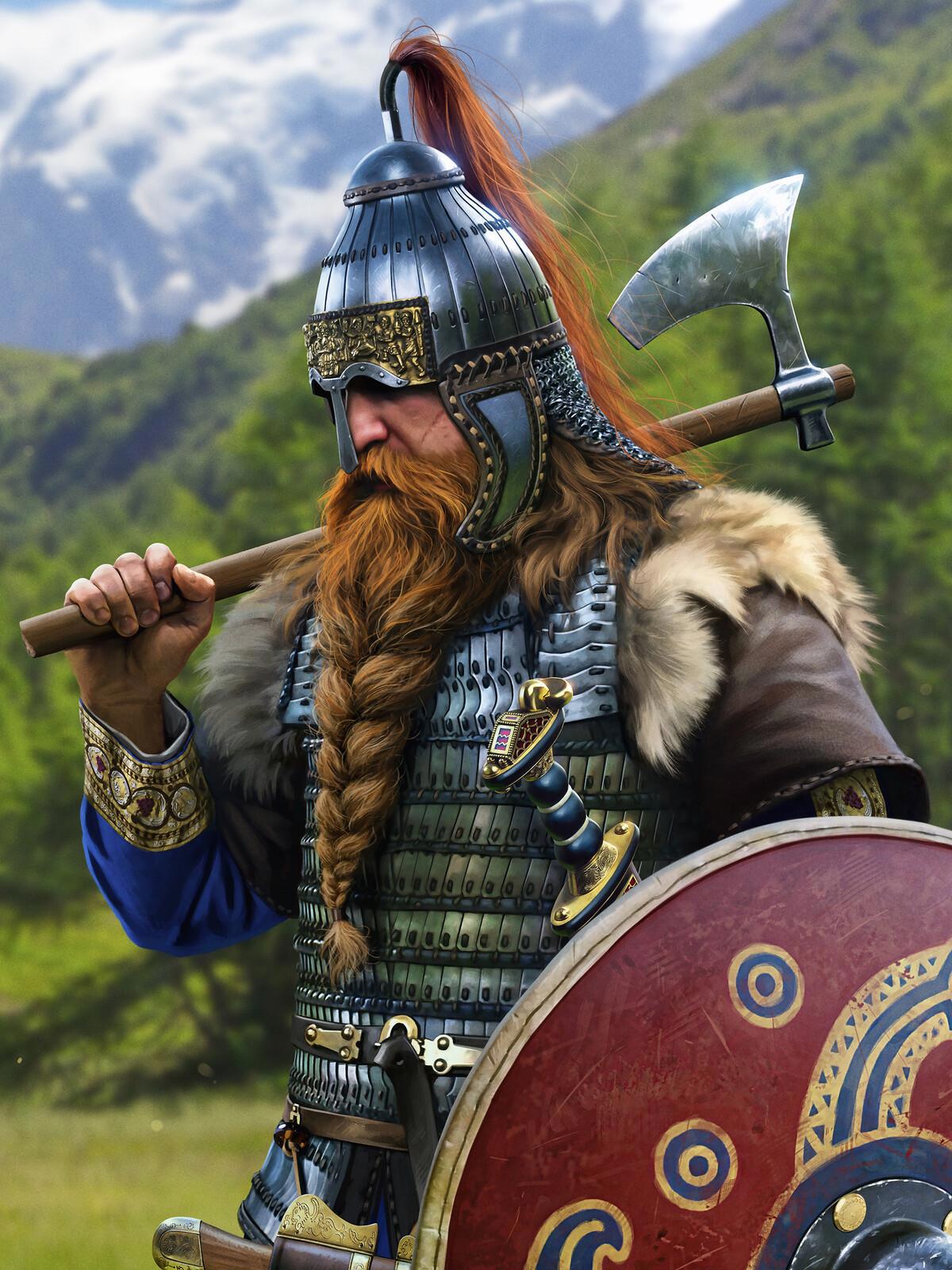

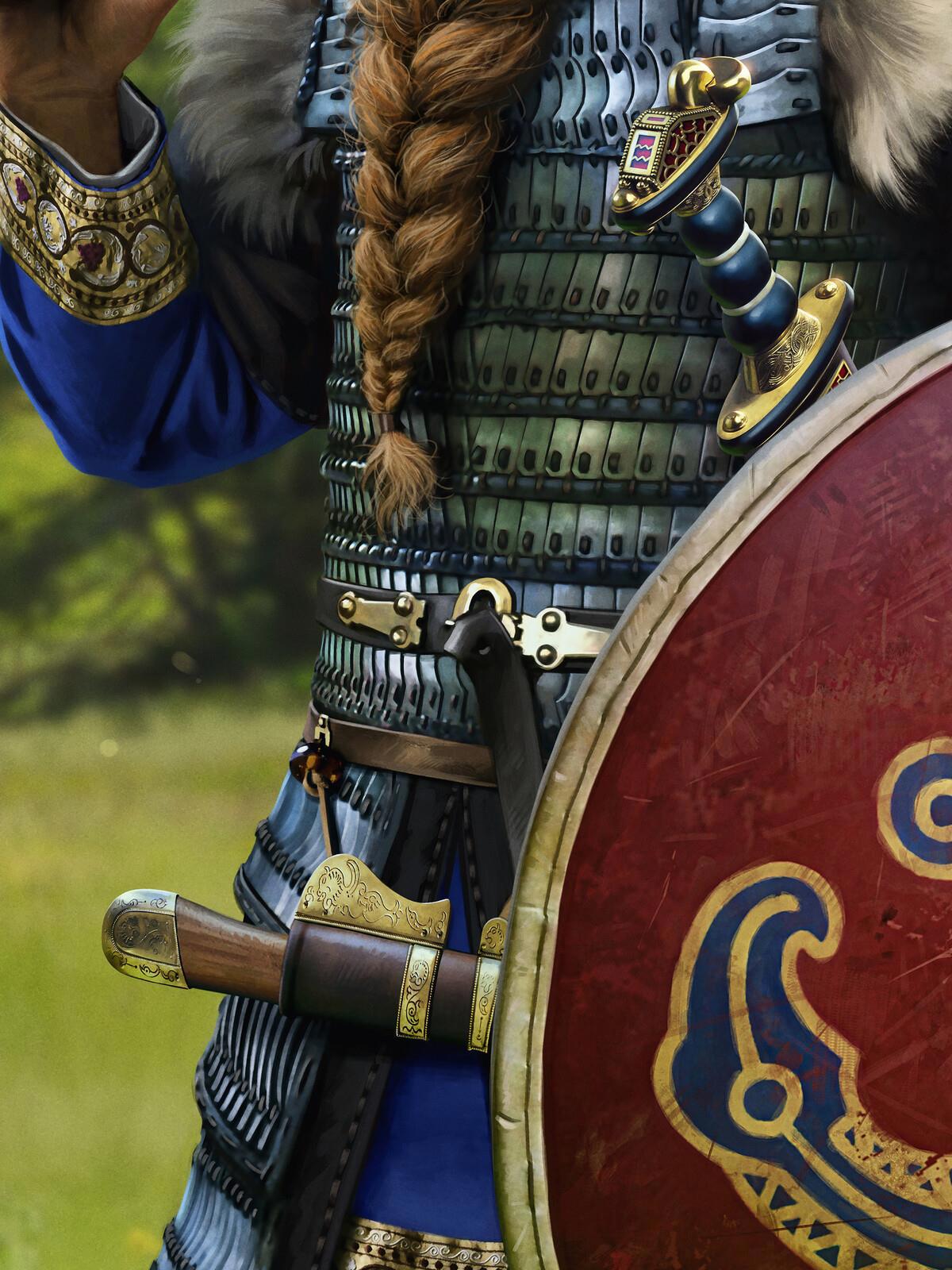
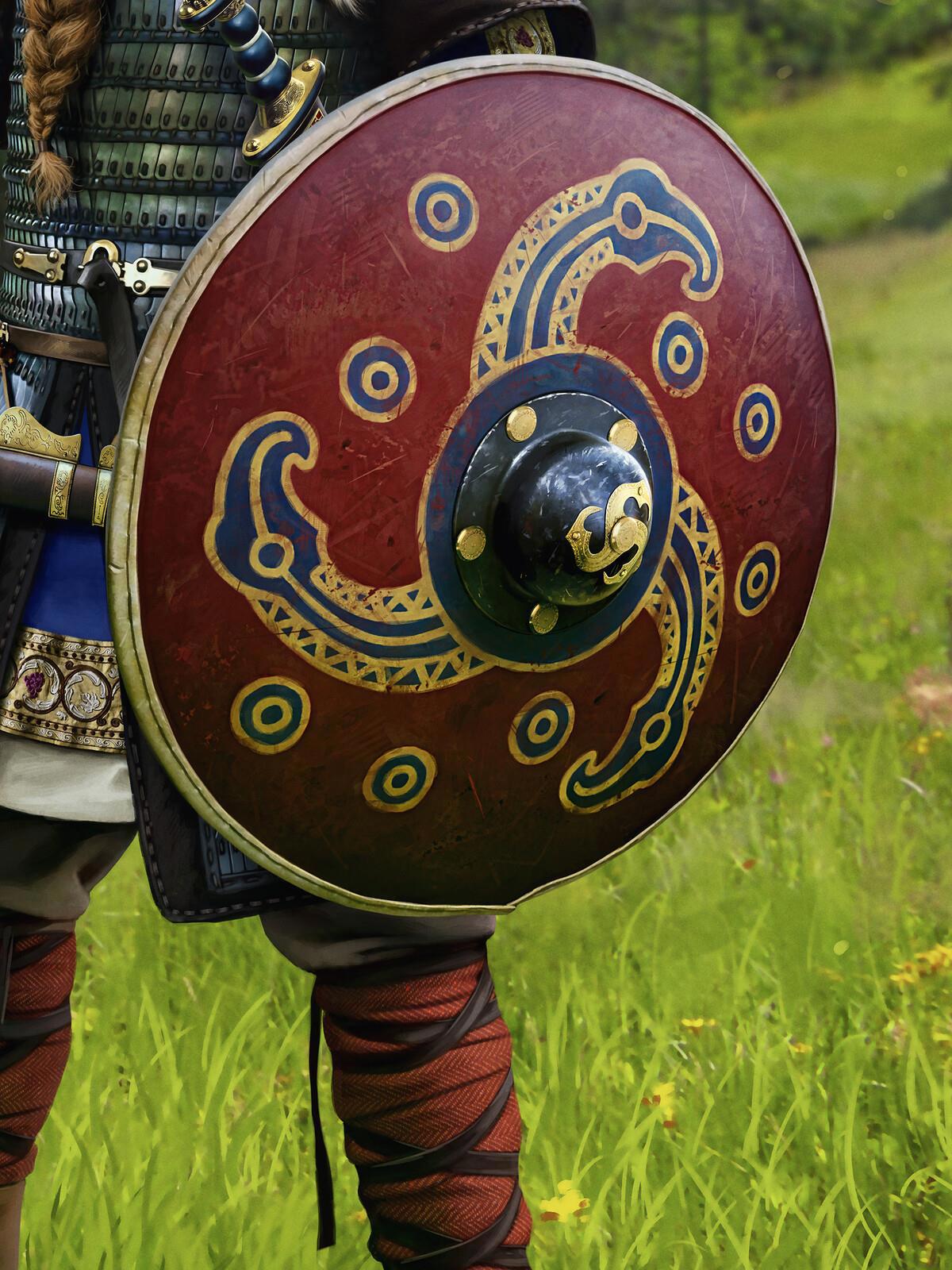
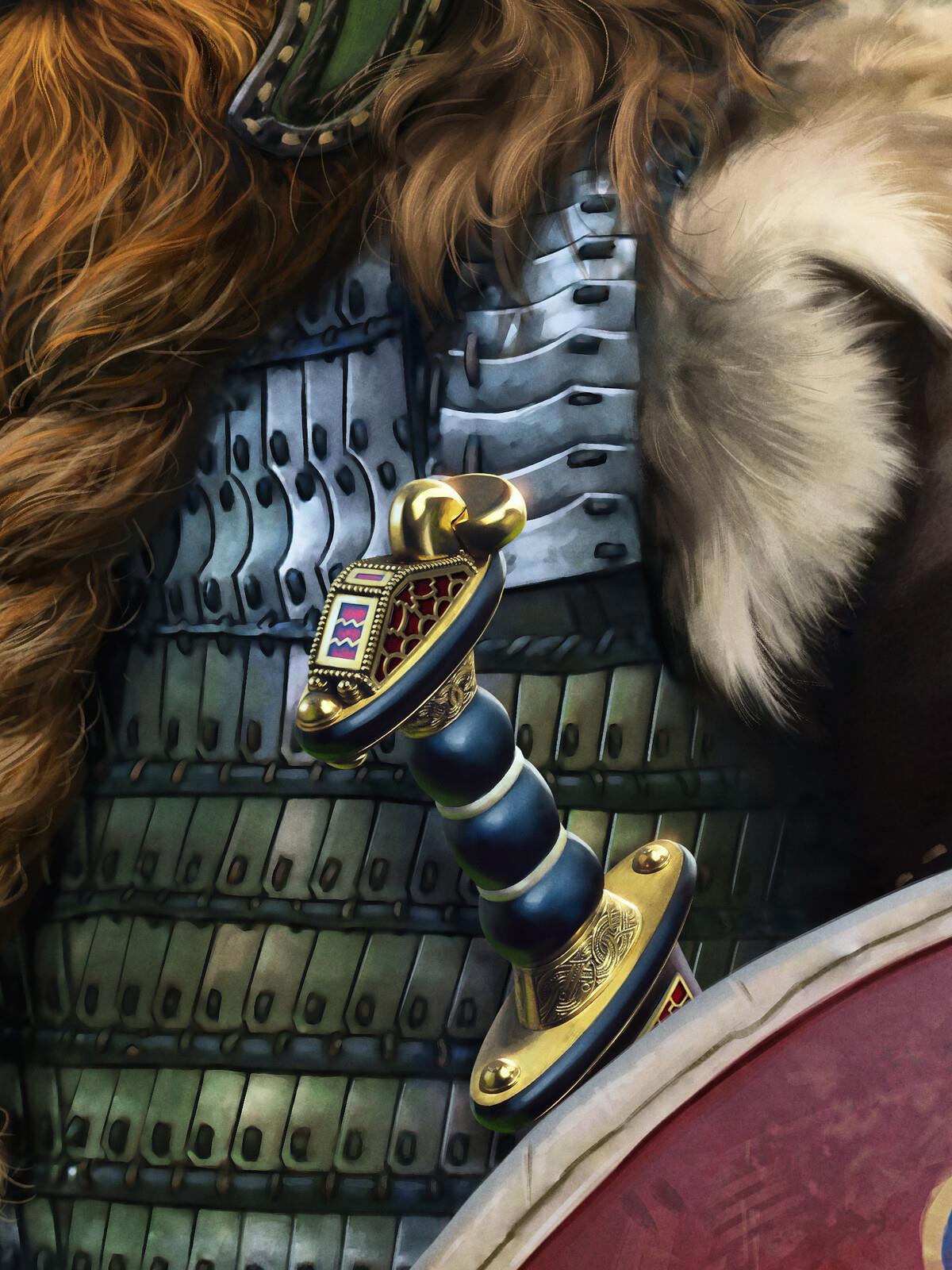

 ️ Joan Francesc Oliveras Pallerols
️ Joan Francesc Oliveras Pallerols